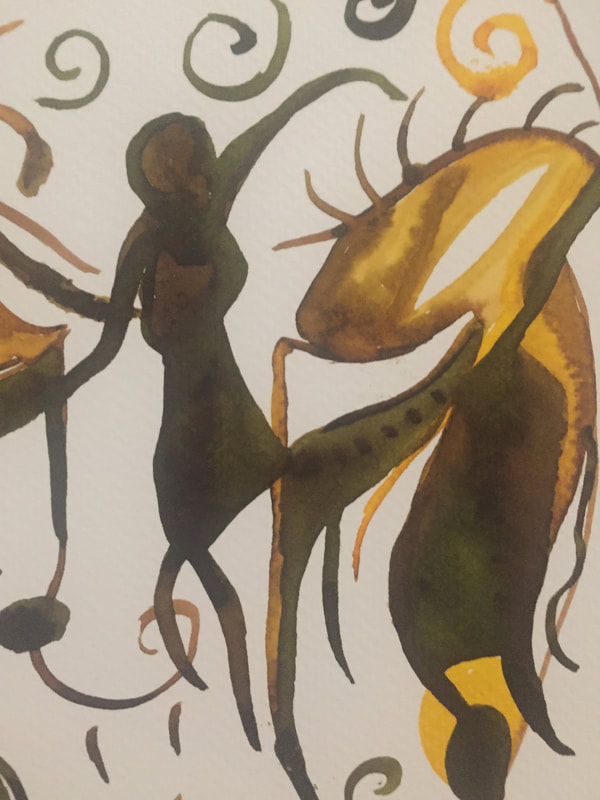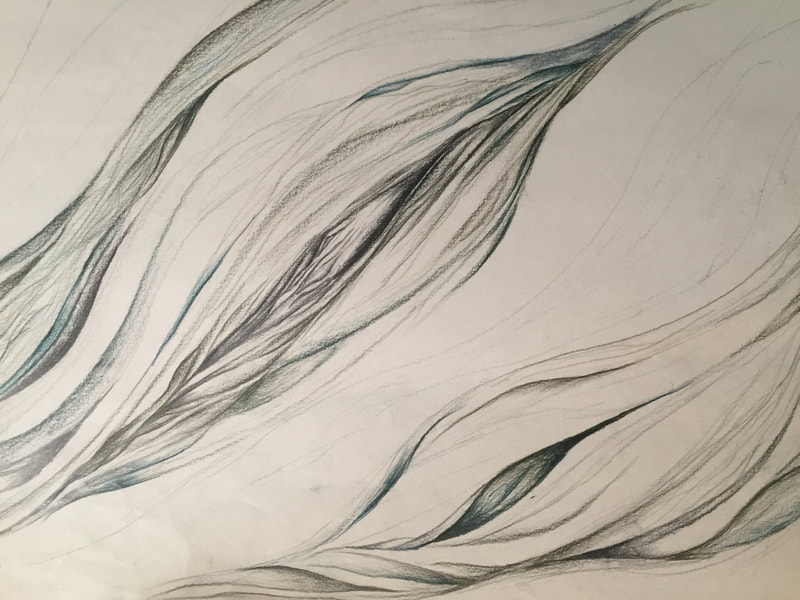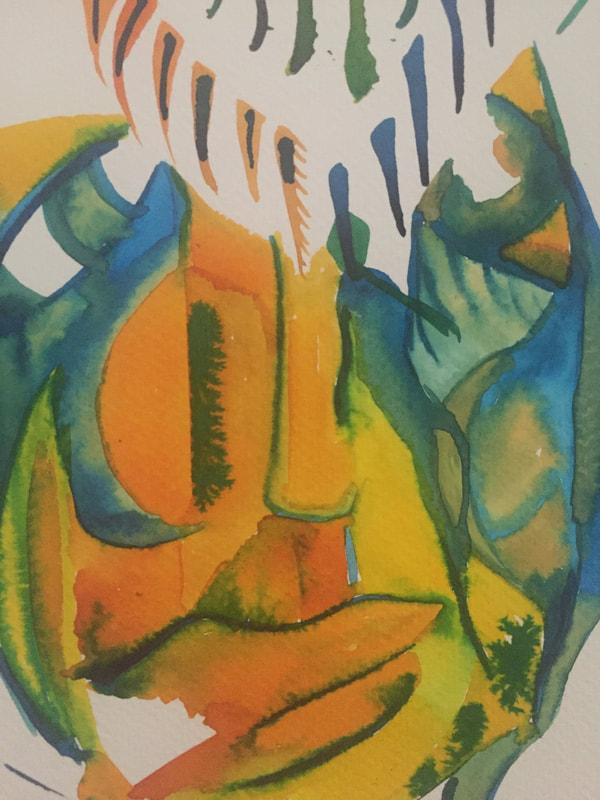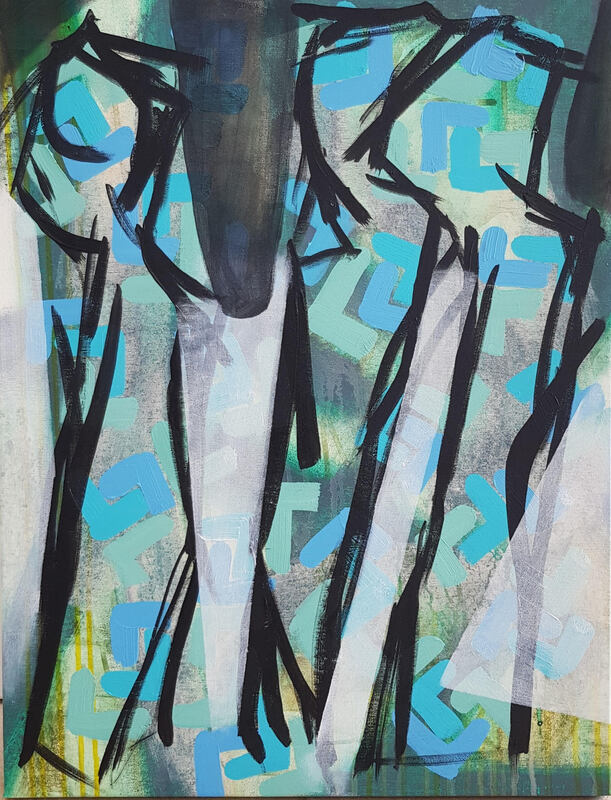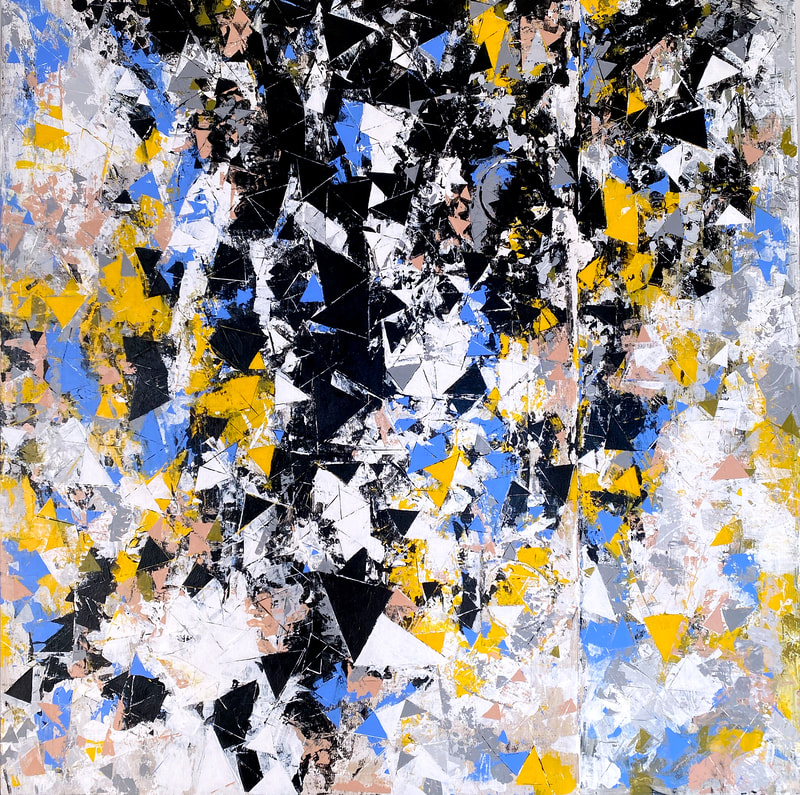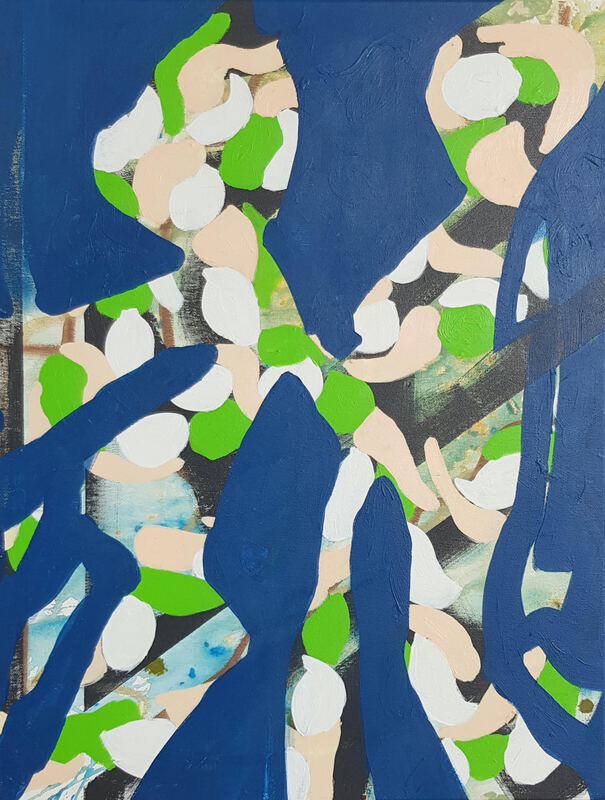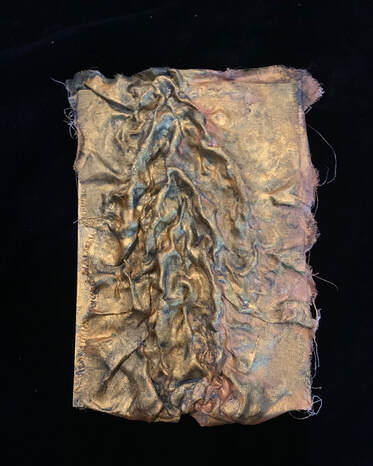 Folklore: The Pine barrens #1 (2023) by Elizabeth Khoury Acrylic and gauze on wood 29,7 x 21 cm Folklore: The Pine barrens #1 (2023) by Elizabeth Khoury Acrylic and gauze on wood 29,7 x 21 cm In the noise and bustle of the contemporary world, where technology evolves at a dizzying pace and cultures continuously collide, humanity's shared stories and traditions remain firmly rooted in the fertile soil of art and folklore. These timeless companions, entwined in a dance of creativity and cultural identity, continue to shape our understanding of the world, and connect us to the rich tapestry of human experience. Diverse forms and expressions in art have long been a mirror reflecting society’s soul. From ancient cave paintings to modern digital art, artists have sought to capture the essence of human experience and communicate it across time and space. Folklore weaves a narrative thread that binds communities and generations together. It is the myths, legends, and traditions that have been passed down through oral and written means, embodying the collective wisdom and imagination of a people. In the contemporary world, the intersection of art and folklore has taken on a renewed significance. As societies become more interconnected and diverse, the fusion of traditional storytelling with modern artistic mediums creates a powerful vehicle for cultural expression and understanding. Artists draw inspiration from folklore, infusing their creations with the essence of ancient tales while adapting them to resonate with contemporary audiences. Consider the resurgence of interest in mythology in popular culture, from blockbuster movies to bestselling novels. Mythical creatures and legendary heroes once confined to the pages of ancient texts now stride across the silver screen and leap off the pages of bestsellers, captivating audiences globally. This reimagining of folklore not only preserves cultural heritage but also introduces it to new generations, fostering a sense of continuity and shared identity. This blending of art and folklore also serves as a bridge between different cultures, fostering cross-cultural dialogue and understanding. In an era of globalization, where borders blur and people from diverse backgrounds coexist, the exchange of artistic expressions rooted in folklore becomes a powerful tool for building connections. Artists draw on the rich tapestry of global folklore to create works that resonate with audiences across cultural divides, celebrating our shared humanity. One notable example is the rising popularity of folk-inspired music in the contemporary music scene. Musicians from various genres incorporate traditional melodies, instruments, and storytelling techniques into their compositions, creating a sound that transcends cultural boundaries. This fusion not only preserves and revitalizes traditional musical forms but also introduces them to new audiences, creating a harmonious blend of the old and the new. The relevance of art and folklore in the contemporary world extends beyond entertainment and aesthetics. It plays a crucial role in addressing social issues and fostering a sense of belonging. Artists, drawing inspiration from the lessons embedded in folklore, create works that reflect on universal themes such as love, loss, resilience, and the human connection to nature. In doing so, they contribute to a shared cultural dialogue that transcends geographical and temporal constraints. Additionally, the incorporation of folklore into contemporary art serves as a reminder of the importance of cultural diversity and the preservation of indigenous knowledge. As globalization threatens to homogenize cultures, the celebration of folklore in art becomes a powerful assertion of cultural identity and a call to preserve the unique stories and traditions that define different communities. The symbiotic relationship between art and folklore continues to thrive in the contemporary world, shaping our understanding of ourselves and the societies we inhabit. As artists draw inspiration from ancient tales to create modern masterpieces, and as folklore finds new expression in the digital age, the timeless companions remain steadfast, weaving a narrative thread that connects us to our past and guides us into an ever-evolving future. In this dance of creativity and cultural identity, art and folklore emerge as beacons, illuminating the path to a more interconnected, understanding, and harmonious world.
0 Comments
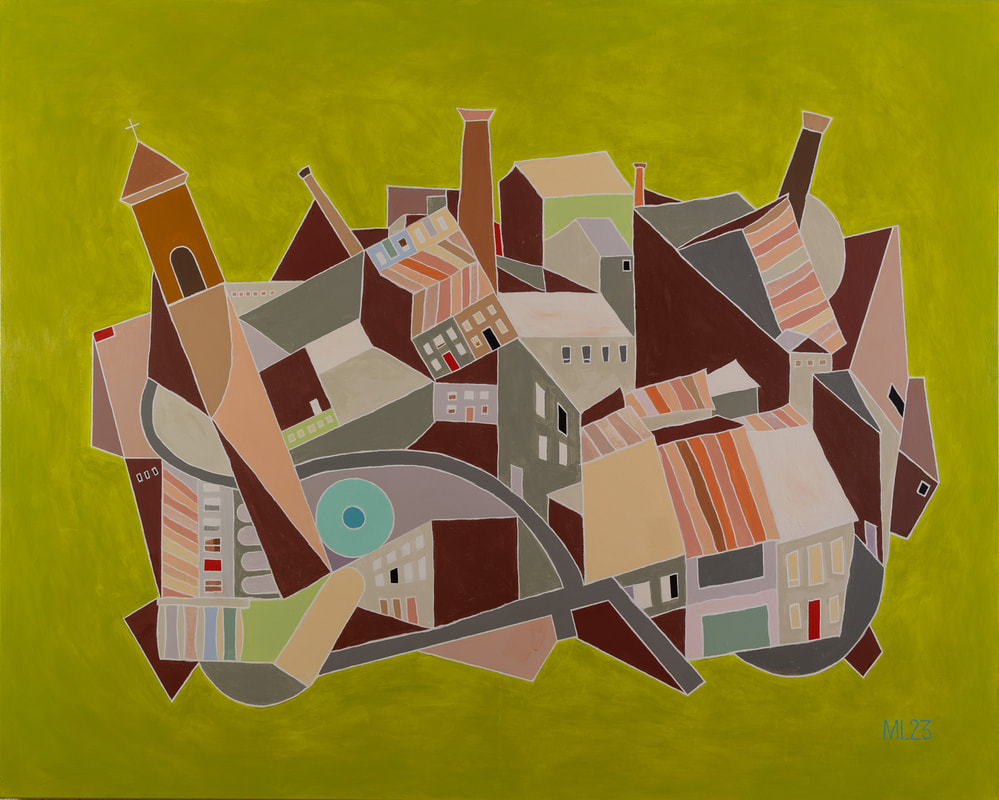 Pueblo en La Huerta, which means Village in the Orchard, is a complex and abstract representation of a village or small town, composed of geometric shapes and forms that combine to create buildings, roofs, and a church tower. The color palette is muted, with earthy tones such as browns, grays, and beiges dominating the scene. There are also touches of more vibrant colors like reds and blues, adding a dynamism of life. The background is a solid green color, contrasting with the complexity of the shapes forming the village, evoking a sense of the pastoral. There is an absence of skies or natural elements like trees or plants; instead, the painting focuses solely on architectural forms. The style of the painting is clearly influenced by Cubism, Mark Lamprell uses this technique to create a sense of depth and dimensionality, as well as suggesting movement and rhythm. He also uses shading and overlapping to create volume and solidity. The painting is not realistic, but rather an abstracted version of space, where the shapes and colors are more important than the details and proportions. Mark Lamprell uses acrylic paint, a versatile medium that allows for a rich and smooth texture. It can be applied in thin or thick layers, creating different effects and expressions. It allows for the creation of a harmonious and balanced composition, where the colors and shapes complement each other and create a unified whole. The vision that Lamprell had for this painting was to capture the essence and spirit of a village in the orchard, a typical landscape of the Valencian region where he now lives. The orchard, or huerta, is a fertile and irrigated area where fruits and vegetables are grown. It is also a cultural and historical symbol of the region, as it reflects the influence of the Arab and Roman civilizations that previously occupied the land. Lamprell portrays the village as a living and dynamic entity, the shapes and colors representing people, daily activities, and traditions, which he does through his own personal and artistic vision, where he experiments with form, color, and space. The composition of the painting is based on a geometric and symmetrical arrangement, where the shapes and forms are distributed evenly and orderly. The painting is divided into two main parts: the foreground and the background. The foreground occupies most of the canvas and contains the village, which is composed of various shapes and forms that create a sense of depth and perspective. The background occupies a smaller portion of the canvas and contains the green color, which creates a sense of contrast and distance. The painting also has a focal point, which is the church tower, located in the center of the canvas. The church tower is the tallest and most prominent shape, and it draws the attention of the viewer. It also represents the traditional religious and social center of the village – its “heart” - where the people gather and celebrate. This complex and abstract representation of a Valencian village shows that shapes and colors can be more important than details and proportions when we wish to reflect the hidden realm we all seek, a place where we seek tranquility and serenity beyond the chaotic world we live in. This month sees the work of Australian writer, artist and director, Mark Lamprell, at the gallery. Songs of Valencia is a reflection of how he sees his adopted home. In this blog post we will examine how the meaning of place shifts through a stranger's gaze.
Every place holds a unique charm, a distinctive character that captivates those who set foot upon its grounds. Yet, there's an unparalleled magic in experiencing a location through the eyes of an outsider. The perspective of someone unfamiliar with the nuances and customs of a place often unveils layers of beauty, shedding light on facets that locals might overlook or take for granted. When we visit a new place, devoid of preconceptions and biases, our senses become keener, our curiosity piqued. Everything seems to stand out—the sights, sounds, smells, and even the subtle gestures and interactions of the people. A fresh perspective grants us the gift of seeing the extraordinary in the seemingly ordinary. One of the most beautiful aspects of experiencing a specific place as an outsider is the immediacy of observation. A visitor's eyes don't just glance over the landscape; they linger a little longer, absorbing the details that locals might overlook due to familiarity. Every corner holds a story waiting to be discovered—the quaint cafe tucked away in an alley, the vibrant street art adorning forgotten walls, or the way sunlight dances through the foliage of a park. An outsider's perspective often comes with a heightened sense of wonder and appreciation. The architectural marvels, cultural rituals, and local traditions that may have become routine for residents are seen with fresh enthusiasm. The vibrancy of a street market, the authenticity of a traditional dance, or the aroma of a beloved local dish—all take on an aura of novelty and excitement. Language, too, plays a pivotal role in shaping this unique viewpoint. An outsider may not be fluent in the native tongue, leading to an increased focus on non-verbal cues, gestures, and expressions. This linguistic barrier fosters a deeper connection with the essence of communication—the emotions conveyed through a smile, a nod, or a shared laugh, transcending linguistic boundaries and speaking to the universality of human connection. Moreover, the cultural differences noticed by an outsider can be a source of revelation. Customs that locals consider ordinary might appear extraordinary to visitors, sparking conversations and fostering cross-cultural understanding. These differences become bridges, connecting diverse perspectives and enriching the experience for both the observer and the observed. However, this outsider perspective is not without its challenges. Misinterpretations or misunderstandings might arise due to the lack of cultural context. Yet, these moments of confusion often lead to insightful reflections and a deeper appreciation for the complexities of a place and its people. In essence, seeing a specific place through outsider eyes is akin to discovering a hidden treasure—a journey filled with surprises, revelations, and a profound sense of appreciation. It invites us to embrace the unfamiliar, to look beyond the surface, and to find beauty in the nuances that define a place's identity. Ultimately, it's through this outsider lens that we can truly appreciate the diverse tapestry of our world, celebrating the richness found in every unique corner of our planet. 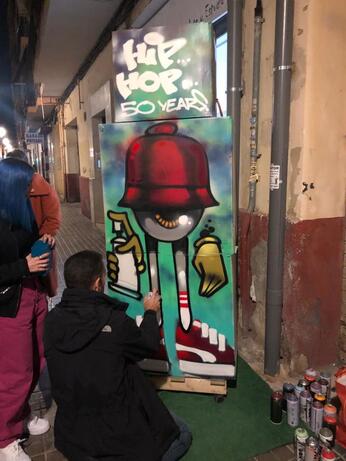 This weekend we hosted Art Toy Con at the gallery. A diverse group of creators came together to show and sell their wares. From jewelry made from recycled electronic elements to resin cast skulls, it was a festival of amazing creativity. Art has always been a reflection of society, a canvas that captures the diverse narratives and expressions of human experiences. Within this expansive realm, there exists a fascinating interplay between urban and grassroots art movements and the more established, traditional forms of artistic expression. This dynamic spectrum encapsulates a tapestry of creativity, innovation, and social commentary. At its core, establishment art often refers to the mainstream, recognized within formal institutions like museums, galleries, and art academies. It often adheres to classical techniques and is historically associated with renowned artists whose works are deemed culturally significant. This realm embraces paintings, sculptures, and other conventional forms that have stood the test of time. Contrastingly, urban and grassroots art emerge from diverse communities, often outside the established art world. These movements thrive on creativity, often breaking away from conventional norms and taking art to the streets, literally and figuratively. Street art, graffiti, community murals, and participatory installations - expressions that weave into the fabric of everyday life, challenging societal norms and engaging with a broader audience. Urban and grassroots art frequently embodies a sense of immediacy and directness. It's art that doesn't demand a museum visit; it's there on the walls, streets, or public spaces, engaging people in unexpected ways. Its themes often revolve around social justice, activism, and inclusivity, aiming to spark conversations and provoke thoughts. One of the defining aspects of these movements is their accessibility. While establishment art can sometimes feel exclusive or confined within certain circles, grassroots art invites participation. It often celebrates collaboration, inviting local communities to contribute, making art a shared experience rather than a distant admiration. The digital age has significantly amplified the reach and impact of both urban grassroots and establishment art. Social media platforms serve as virtual galleries, enabling artists from all backgrounds to showcase their work globally. However, the democratization of art through digital platforms has its challenges, blurring the lines between authenticity and commercialization. Yet, there's an evolving synergy between these seemingly distinct realms. Artists often traverse between these spaces, drawing inspiration from both grassroots creativity and established techniques. Institutions are increasingly recognizing the significance of urban art, integrating it into their collections and exhibitions, acknowledging its cultural relevance and societal impact. In essence, the dichotomy between establishment and urban grassroots art isn't so much a rigid divide, but rather a fluid spectrum where ideas, techniques, and expressions intermingle. While one preserves artistic traditions and craftsmanship, the other pushes boundaries, fostering innovation and societal dialogue. Appreciating the richness of this diversity involves embracing artistic expression in all its forms, acknowledging that each facet contributes uniquely to the ever-evolving tapestry of human creativity. The dialogue between these realms isn't a clash but a harmonious symphony, enriching the art world and reflecting the complexity of the human experience. In the grand mosaic of art, the coexistence of urban and grassroots movements alongside establishment art forms an intricate, vibrant canvas that continually evolves, resonating with the pulse of society and human imagination.  Machine Gun by Leonardo da Vinci Machine Gun by Leonardo da Vinci Looking back at history, the relationship between art and technology has often been reciprocal. During the Renaissance, artists like Leonardo da Vinci were not only masterful painters but also pioneers in various scientific fields. Their artistic pursuits fueled scientific curiosity, and vice versa. Today, as technology influences art, it also mirrors the symbiotic relationship of the past. Art and technology have a long and complex history of influencing each other. From the invention of perspective in the Renaissance to the emergence of digital art in the 21st century, technology has provided artists with new tools, mediums, and possibilities for expression. However, technology also poses some challenges and risks for the artistic community, such as the loss of authenticity, originality, and value. In this blog, I will explore some of the pros and cons of technology for a painter or an artist in general, based on how art in the past drove science to become more enlightened. One of the main advantages of technology for artists is that it enables them to create, share, and access art more easily and efficiently. Technology allows artists to experiment with different techniques, materials, and formats, such as 3D printing, digital painting, and interactive installations. Technology also helps artists to reach a wider and more diverse audience, through online platforms, social media, and digital exhibitions. Technology can also enhance the educational and cultural value of art, by providing information, context, and feedback to the viewers. For example, some museums use augmented reality to display additional details and explanations about the artworks. Another advantage of technology for artists is that it can inspire them to explore new concepts, themes, and perspectives, and to challenge the boundaries of what is considered art. Technology can stimulate the artistic imagination, by offering new sources of data, images, and sounds, and by enabling new forms of collaboration and communication. Technology can also provoke artistic critique, by exposing the social, ethical, and environmental issues of the modern world, and by inviting the viewers to question their own assumptions and values. For example, some artists use artificial intelligence to generate art that reflects the human-machine relationship. However, technology also has some disadvantages for artists, especially when it comes to the quality, originality, and value of their work. Technology can undermine the authenticity and uniqueness of art, by making it easier to copy, reproduce, and manipulate. Technology can also create a sense of detachment and alienation, by reducing the physical and emotional connection between the artist, the artwork, and the viewer. Technology can also devalue art, by creating an oversupply of artworks, and by fostering a culture of consumerism and disposability. For example, some artists struggle to protect their intellectual property rights and to earn a fair income from their digital artworks. Another disadvantage of technology for artists is that it can distract them from their artistic vision, purpose, and identity, and make them dependent on external factors and influences. Technology can tempt the artists to follow the trends, to please the masses, and to compromise their artistic integrity. Technology can also overwhelm the artists, by exposing them to too much information, competition, and criticism, and by creating unrealistic expectations and pressures. Technology can also isolate the artists, by reducing their social and professional interactions, and by creating a gap between them and their traditional peers and mentors. For example, some artists feel that technology has diluted the art, by opening new pathways to art participation and art criticism. In conclusion, technology is a double-edged sword for artists, as it offers both opportunities and challenges. Technology can enhance artistic creativity, expression, and impact, but it can also impair artistic authenticity, originality, and value. Technology can inspire artistic innovation, exploration, and critique, but it can also distract the artistic vision, purpose, and identity. Therefore, artists need to be aware of the pros and cons of technology, and to use it wisely and responsibly, in order to create art that is meaningful, relevant, and valuable. Navigating the artistic realm can be a daily dance with self-esteem and creativity for many artists. The perpetual pursuit of perfection often intertwines with a nagging sense of inadequacy, creating a delicate balance that can easily tip towards self-doubt. Artists, fueled by an insatiable desire for creative expression, grapple with the constant fear of falling short of their own expectations. The blank canvas becomes both a playground and a battleground, where the fear of judgment, coupled with the artist's relentless pursuit of improvement, can cast shadows over their self-esteem. In this intricate dance, creativity often wrestles with the pressure to meet standards, stifling the free flow of ideas. The fear of not being "good enough" can act as a formidable barrier, hindering the very creativity artists seek to unleash. This internal struggle is a shared narrative among many artists, a silent dialogue that unfolds daily. Yet, within this struggle lies the potential for growth. Acknowledging these challenges, supporting one another, and embracing the imperfect nature of the artistic journey can be the catalyst for overcoming self-esteem hurdles and letting creativity soar unencumbered. Sketching can help. Where imagination dances freely and creativity knows no bounds, sketching stands as a fundamental practice that transcends skill levels and artistic styles. Whether you're a seasoned artist or a novice holding a pencil for the first time, the act of sketching every day is a transformative journey that yields a myriad of benefits. In this blog, we'll explore the profound importance of daily sketching and how it acts as a catalyst for improving artistic skills, fostering creativity, and boosting confidence.
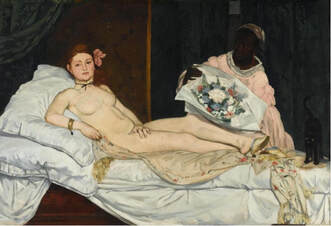 Edouard Manet, 'Olympia' (1863) Edouard Manet, 'Olympia' (1863) Art has been a powerful means of expressing the intricacies of human existence and emotions for centuries. One of the most intriguing aspects of art is its portrayal of the female body, which has been a subject of both fascination and controversy throughout history. From the classical representations of goddesses and muses to contemporary depictions of women, the male perspective on the female form has played a significant role in the world of art. In this blog, we will explore the fine line between objectification and the glorification of female beauty, examining how a male perspective can shape artistic interpretations. Throughout history, the male perspective on the female body has often resulted in the objectification of women. In ancient art, the female form was frequently idealized, portraying women as ethereal, unattainable beings, often as goddesses or nymphs. These idealized depictions often contributed to the objectification of women by presenting an unrealistic standard of beauty that was unattainable for most. The Renaissance period saw a shift in the representation of the female form, with artists like Leonardo da Vinci and Botticelli introducing a more realistic portrayal. However, even during this period, the male perspective continued to influence the depiction of women, emphasizing certain physical attributes that were considered desirable. In contemporary art, the male perspective on the female form has evolved, acknowledging the importance of celebrating female beauty while challenging traditional norms of objectification. Artists have begun to question societal standards of beauty, promoting diversity and inclusivity in their work. This transformation is a result of changing societal values and the influence of the feminist movement, which has brought the objectification of women into the spotlight. Artists like Gustav Klimt, Pablo Picasso, and Egon Schiele explored new facets of the female form, often depicting women in a more realistic and liberated manner. While their work celebrated female beauty, it also raised questions about the objectification of women and the power dynamics inherent in traditional depictions. As male artists, it is essential to recognize the responsibility we bear when portraying the female form. While we have the privilege of artistic expression, we must do so with respect, sensitivity, and awareness of the potential consequences of our work. Instead of perpetuating objectification, we can contribute to a more balanced and meaningful representation of women in art. Balancing Objectification and BeautyArt has the power to celebrate the female body's beauty without objectifying it. Here are some considerations for male artists when approaching the portrayal of the female form:
Art offers a unique opportunity for male artists to contribute to the conversation about the female form. By approaching this subject with respect, authenticity, and a commitment to challenging objectification, we can strike a balance between celebrating the beauty of women and addressing the harmful aspects of their portrayal. In doing so, we not only honor the female form but also pave the way for a more inclusive and equitable art world. 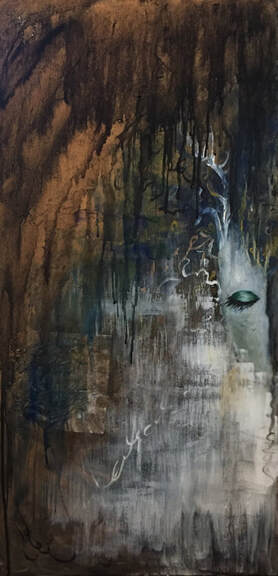 In a world filled with chaos and uncertainty, the pursuit of mental well-being has become a paramount concern for many. People are constantly searching for ways to alleviate the burden of stress and anxiety that accompanies modern life. One surprisingly effective approach is the world of art – either by creating it or by surrounding oneself with it. In this blog, we will explore the concept of "art as a mental health curator" and delve into how both making art and buying art can serve as therapeutic outlets, offering solace to our overworked minds. The Creative Outlet: Making Art for Mental Health Art has been a medium of expression since time immemorial. It is a universal language that transcends time and culture, enabling individuals to articulate their emotions and thoughts. For many, engaging in the creative process is a source of immense relief and a powerful tool for maintaining mental health.
While creating art is undoubtedly therapeutic, not everyone may have the artistic skills or the time to pursue artistic endeavors. For those individuals, the act of buying and collecting art can be an equally potent tool for managing their mental health.
Remember that there is no one-size-fits-all approach to mental health, and individuals may find their own unique path to healing through art. Ultimately, the power of art lies in its ability to serve as a silent companion, an emotional mirror, and a beacon of hope, gently guiding us through the complexities of our mental landscapes. So, whether you pick up a brush or seek out a masterpiece to adorn your walls, the world of art awaits, ready to embrace you in its soothing embrace, bringing solace to your mental stress. The color blue, with its enigmatic charm and versatile nature, has been a subject of fascination for artists throughout history. From serene skies to deep ocean depths, blue occupies a unique space in the spectrum of colors, evoking a wide range of emotions and associations. In this article, we will delve into the profound impact of the color blue in art, exploring its historical significance, psychological effects, and iconic artworks that have celebrated its beauty. A Historical Perspective Historically, blue was a rare and precious pigment, extracted from minerals like lapis lazuli, which was ground into a fine powder to create a vibrant blue pigment known as ultramarine. Due to its scarcity and expense, ultramarine was reserved for the most sacred subjects in religious art, symbolizing divinity and eternity. It adorned the robes of the Virgin Mary and the frescoes of Renaissance masters like Giotto and Masaccio. During the 18th century, a breakthrough occurred with the synthesis of Prussian Blue, a more affordable and accessible pigment. This marked a pivotal moment in art history, as it allowed a wider range of artists to incorporate blue into their works. The Impressionists, for instance, embraced blue's expressive potential, capturing the transient beauty of light and atmosphere in their outdoor scenes. The Psychology of Blue Blue holds a unique position in the realm of colors, as it is often associated with a myriad of emotions and states of mind. It exudes calmness, tranquility, and introspection, making it a popular choice for creating serene landscapes, dreamy seascapes, and contemplative portraits. Its soothing properties can be seen in works like Vincent van Gogh's "Starry Night," where swirling blue hues evoke a sense of cosmic wonder. On the other hand, blue can also evoke feelings of melancholy and introspection. Picasso's "Blue Period" is a testament to this, as he used predominantly blue tones to convey themes of sorrow, poverty, and existential struggle. This period produced some of his most emotionally charged and poignant works, such as "The Old Guitarist" and "La Vie." The Allure of Blue Abstraction The 20th century witnessed a surge in abstract art movements, and blue played a pivotal role in this evolution. Artists like Kazimir Malevich and Yves Klein explored the purity and depth of blue as a means of transcending representational art. Malevich's "Black Square" and Klein's "Blue Monochrome" are iconic examples of how blue, when used in its most distilled form, can evoke a sense of boundless space and contemplation. Contemporary Explorations In contemporary art, blue continues to captivate and inspire artists across the globe. Yayoi Kusama, known for her immersive installations, often uses a vibrant cobalt blue to create hallucinogenic environments that blur the boundaries between art and experience. Additionally, artists like Anish Kapoor have harnessed the reflective properties of blue pigments to create monumental sculptures that appear to defy the constraints of physical space. Conclusion: A Timeless Palette The color blue, with its rich history and complex emotional resonance, remains a source of boundless inspiration for artists. From ancient civilizations to modern innovators, the allure of blue endures, transcending cultural and temporal boundaries. Whether used to evoke the sacred or the sublime, to stir introspection or elicit wonder, blue continues to be a powerful and evocative force in the world of art. It is a testament to the enduring capacity of color to move and inspire us, reminding us of the profound connection between art and the human experience. Surface tension is a physical property of a liquid that makes its surface act like a thin elastic sheet. It is caused by the attraction of the molecules in the liquid, which try to minimize the surface area. Surface tension has many interesting effects, such as forming drops, allowing insects to walk on water, and making needles float. Human interaction is like surface tension, as we try to keep our emotions in check. We act like a thin elastic sheet, to fit in with the social groups we meet. We camouflage and hide our expressions to avoid any unwanted impressions. We minimize our surface area, to reduce the risk of hysteria, but sometimes we break the tension and reveal our true intentions. Drops of honesty form and we show our vulnerability.
Understanding the chaos of life is like surface tension. We try to make sense of the disorder and confusion, our metaphorical thin elastic sheet there to cope with the challenges we meet. We try to understand lines and writings that seem to have no meaning or timing. But sometimes we break the tension and embrace the chaos forming drops of curiosity that allow us to explore the diversity of life. Our mind creates order from scattered dots that resist our understanding. We try to look under a microscope to see the tiniest composition, we blow it up to make sense of it and find a pattern or a relation. The thin elastic sheet stretches to fit the situation, and we try to understand the dots, how they form a structure or a function, minimizing our surface area to reduce the complexity and confusion. But sometimes we break the tension and see the dots in a new dimension, forming drops of creativity and discover a new solution. According to some research, our brain connects the dots to create a subjective reality in what we see, highlighting the constructive nature of perception. Perception is the process of interpreting the sensory information that we receive from the environment. However, perception is not a passive or direct reflection of reality, but an active and constructive process that depends on our prior knowledge, expectations, and goals. We use our brain to create a subjective reality that makes sense to us, based on the available evidence and our previous experiences. The constructive nature of perception is what makes us human because it allows us to go beyond immediate sensory data and infer the hidden causes, meanings, and purposes of the world. We can use our imagination, creativity, and reasoning to form hypotheses, test predictions, and solve problems. We can also use our perception to communicate with others, express ourselves, and create art and culture. However, the constructive nature of perception also has its limitations and biases. Sometimes, we may perceive things that are not there, or miss things that are there, because of illusions, errors, or expectations. Sometimes, we may perceive things differently from others, because of individual differences, cultural influences, or emotional states. Sometimes, we may perceive things in ways that confirm our beliefs or preferences, because of motivation, confirmation bias, or cognitive dissonance. Therefore, the constructive nature of perception is both a strength and a weakness of human cognition. It enables us to adapt to complex and changing environments, but also exposes us to errors and conflicts. It makes us human, but also reminds us that we are not infallible. In the intricate tapestry of life, much like surface tension in liquids, we find a parallel in human interaction and the understanding of the chaotic world around us. Just as molecules strive to minimize their surface area, we, as social beings, often navigate our emotions with a delicate tension, concealing our true selves to fit into the molds of our social groups. Yet, occasionally, we break this tension, allowing drops of honesty and vulnerability to shine through, revealing our genuine intentions. Relying on our constructive nature of perception is a dual-edged sword. It grants us the ability to adapt to a complex and ever-changing world, yet it serves as a constant reminder of our fallibility. We must embrace this dichotomy, recognizing both our unique strength and vulnerability as we navigate the intricate web of life and understanding. |
Details
about bloomWe are a European/Lebanese run art space in Valencia, Spain. Archives
April 2024
COPYRIGHT NOTICE© Bloom Gallery. Unauthorized use and/or duplication of this material without express and written permission from this site’s author and/or owner is strictly prohibited. Small excerpts and links may be used, provided that full and clear credit is given to Bloom Gallery with appropriate and specific direction to the original content.
|

